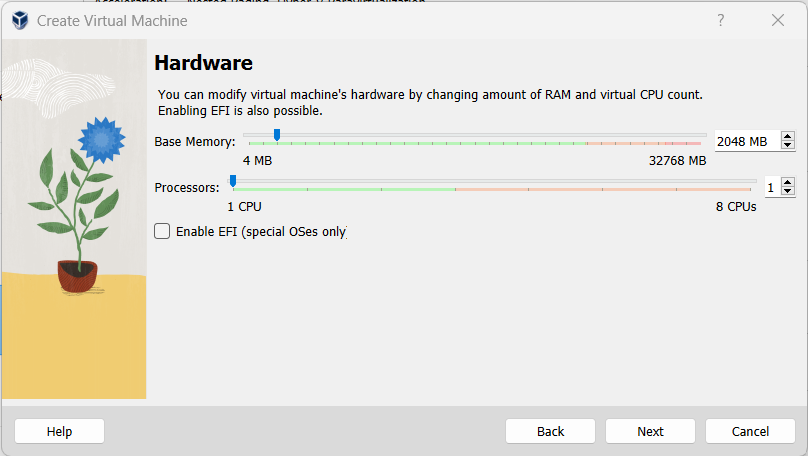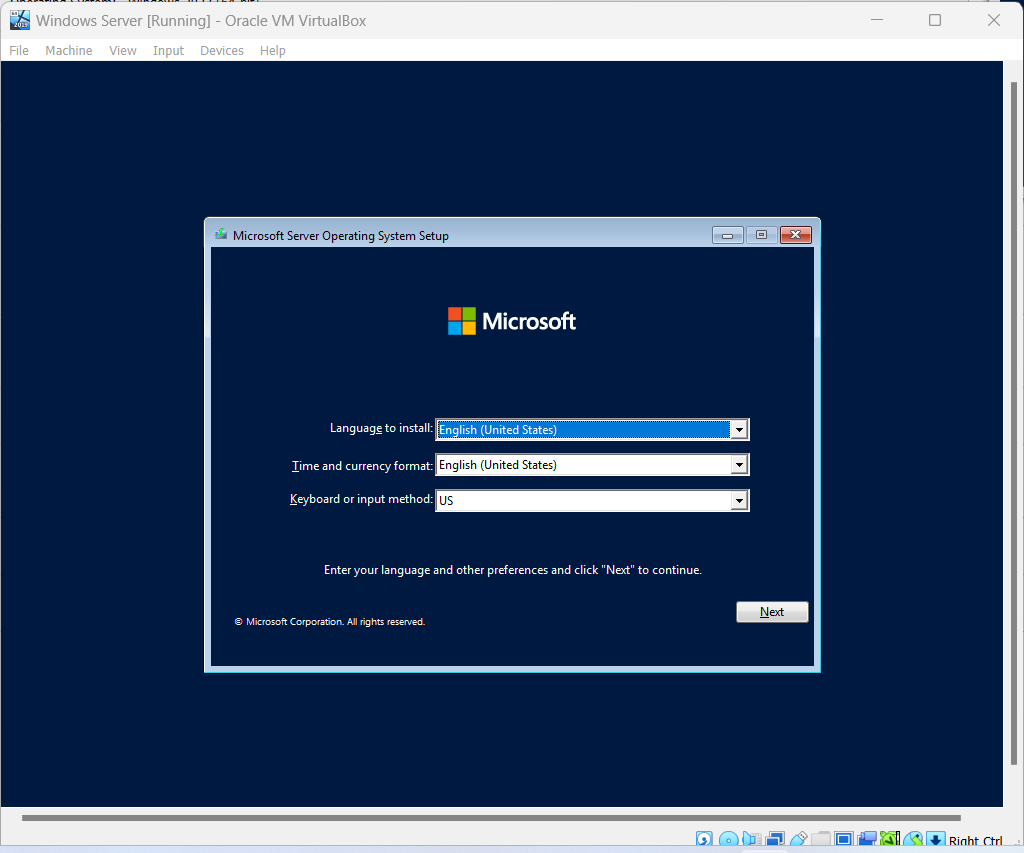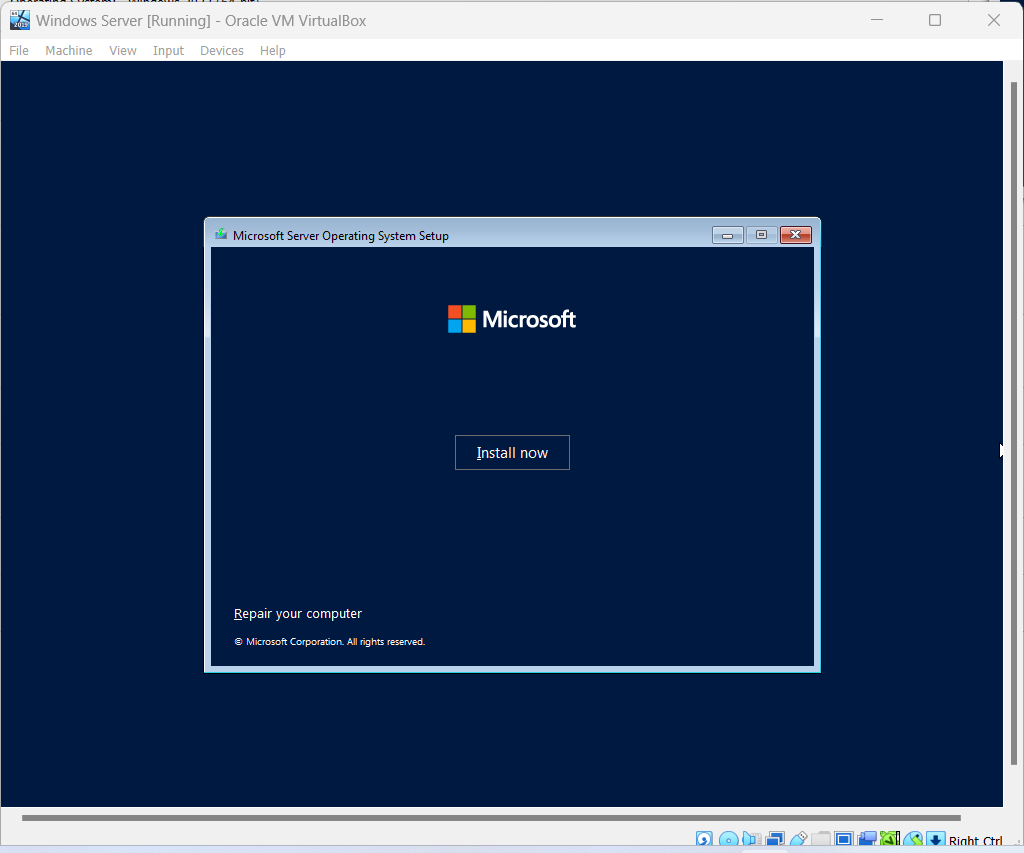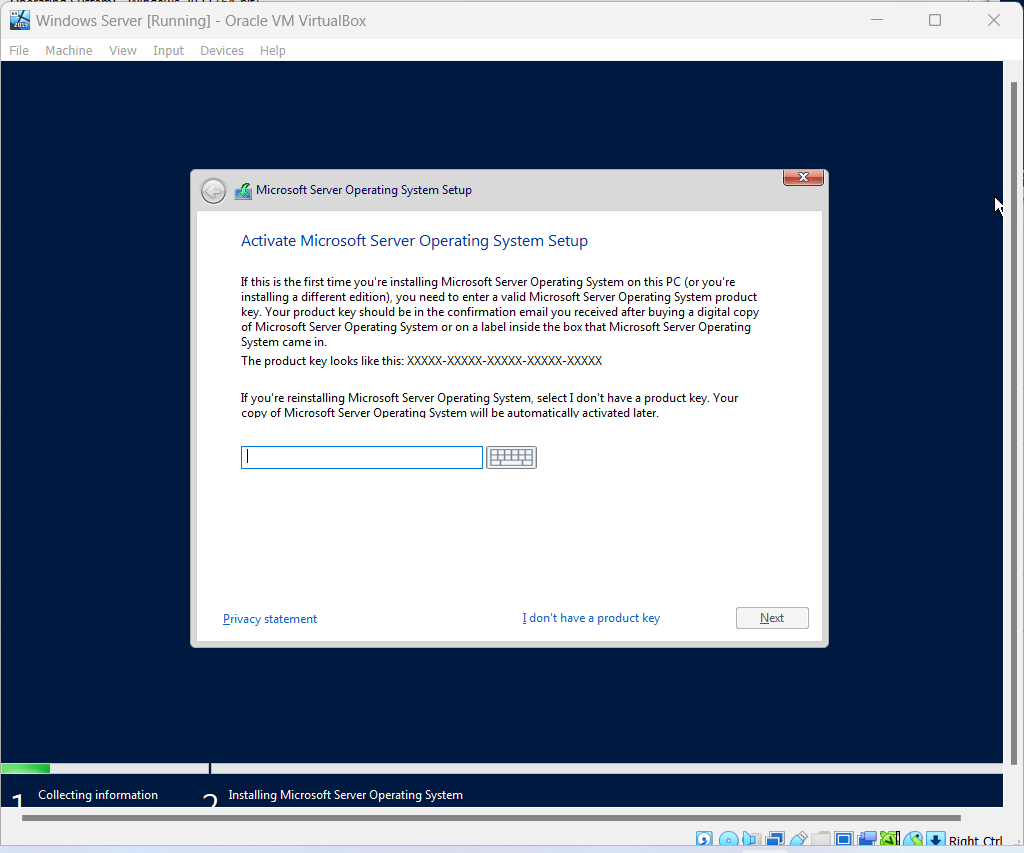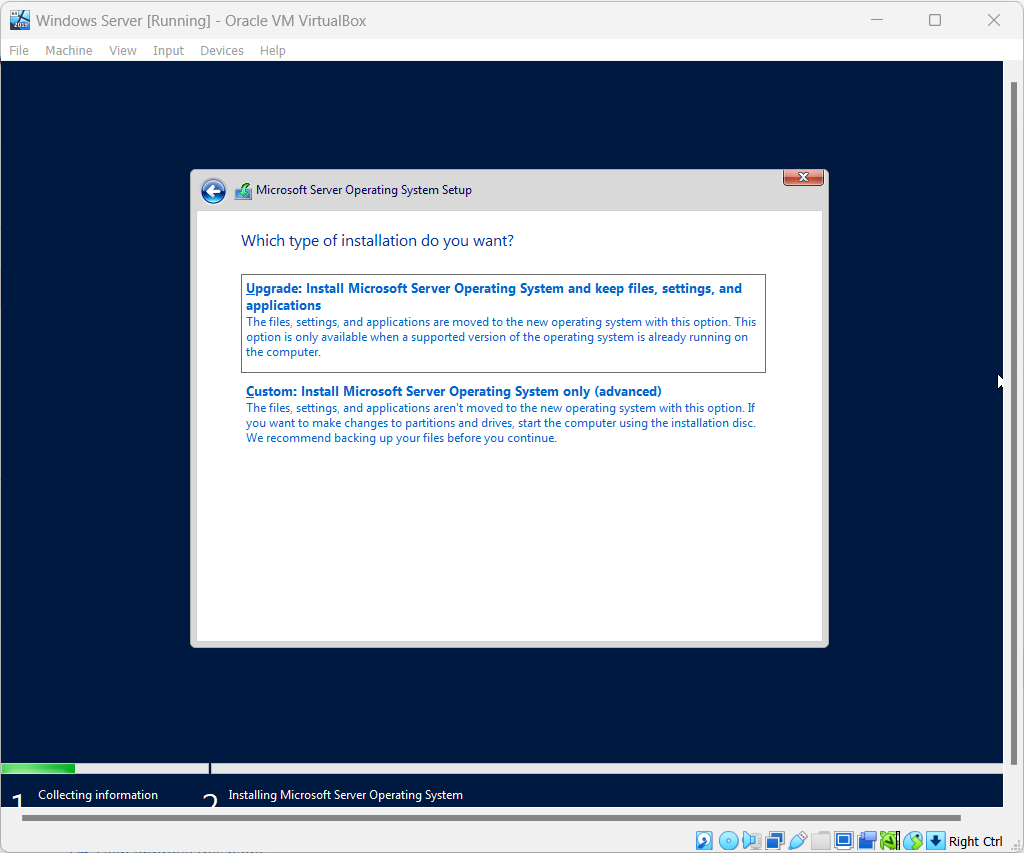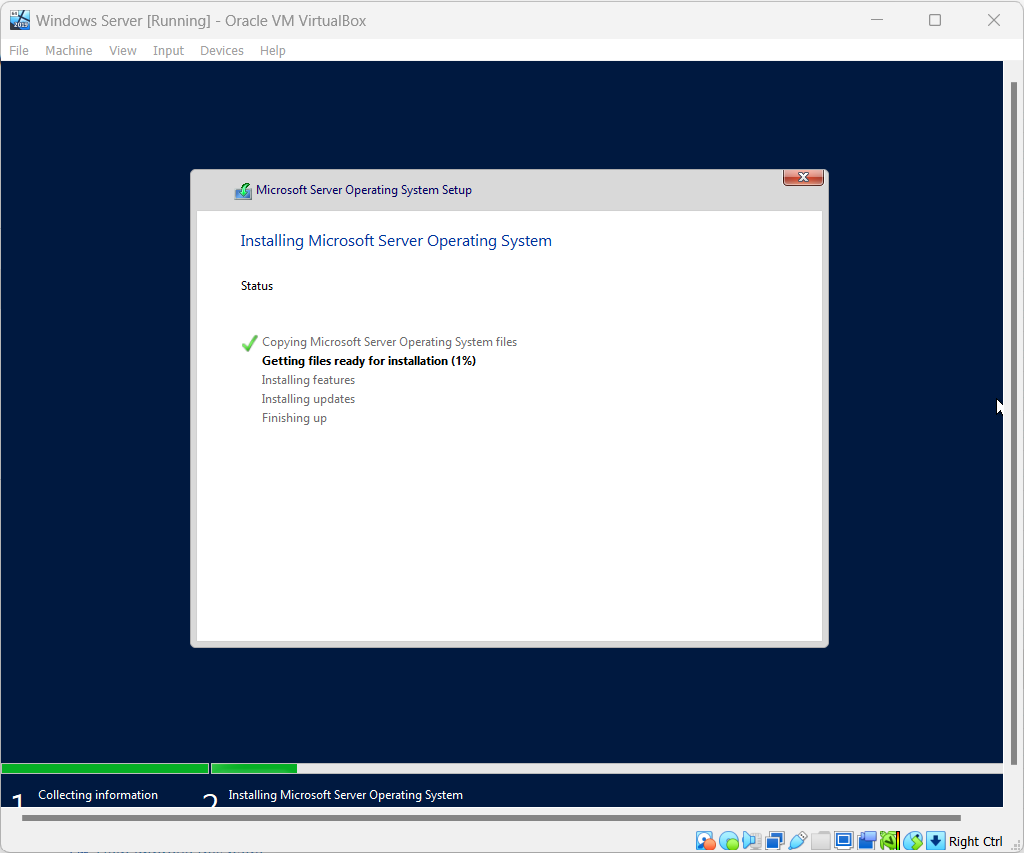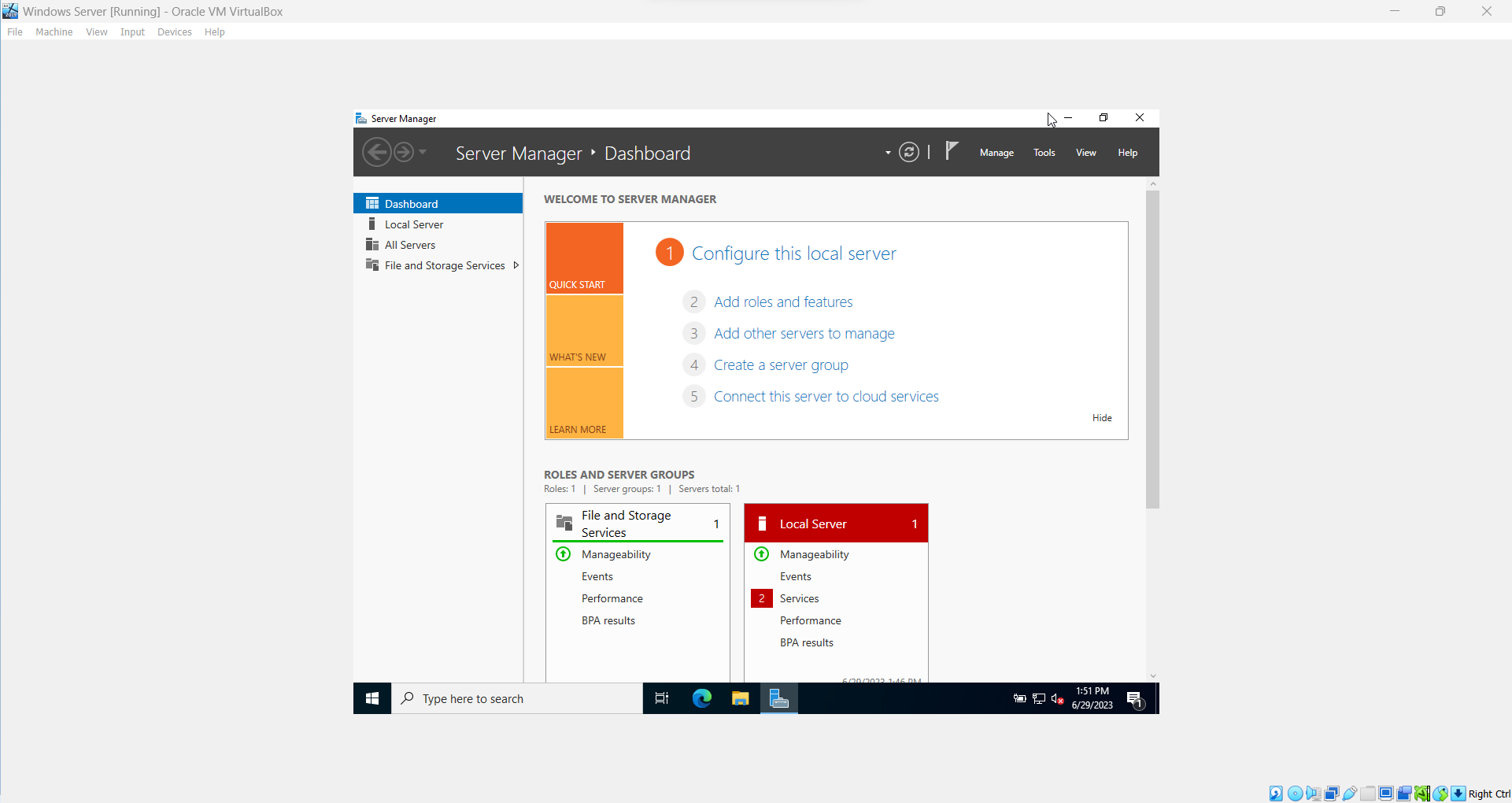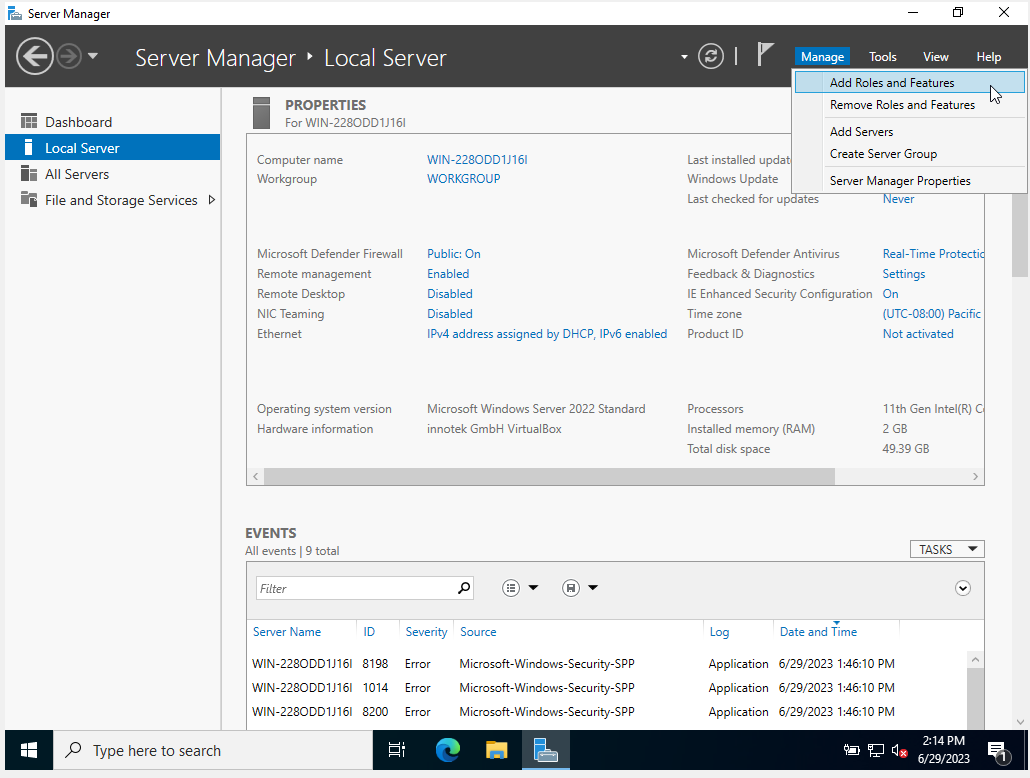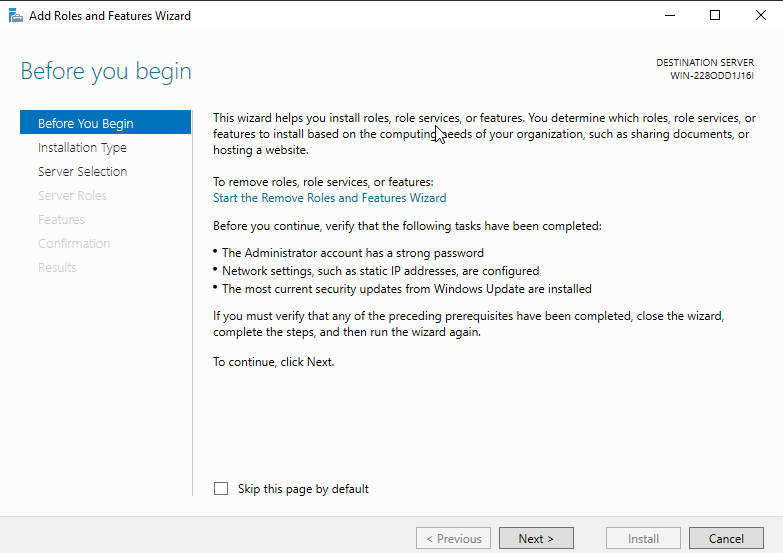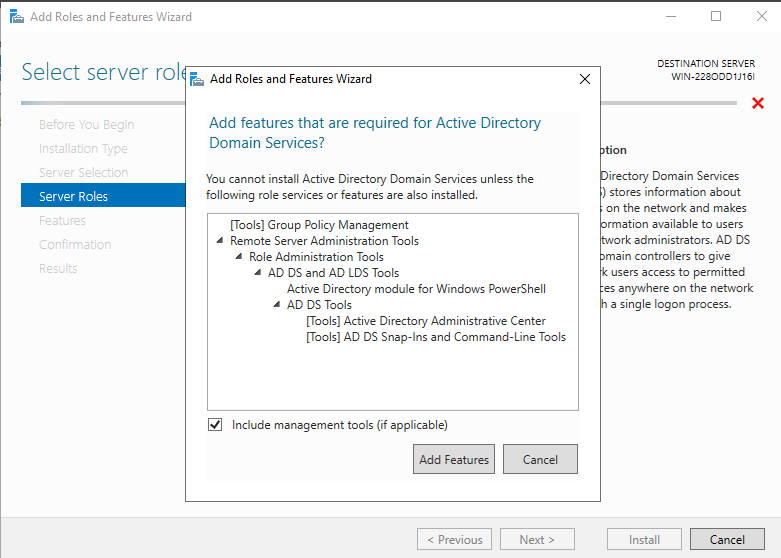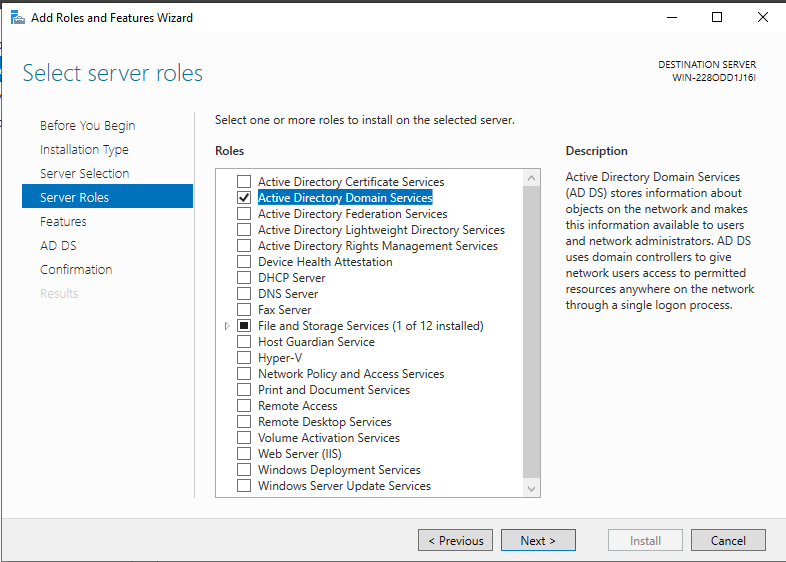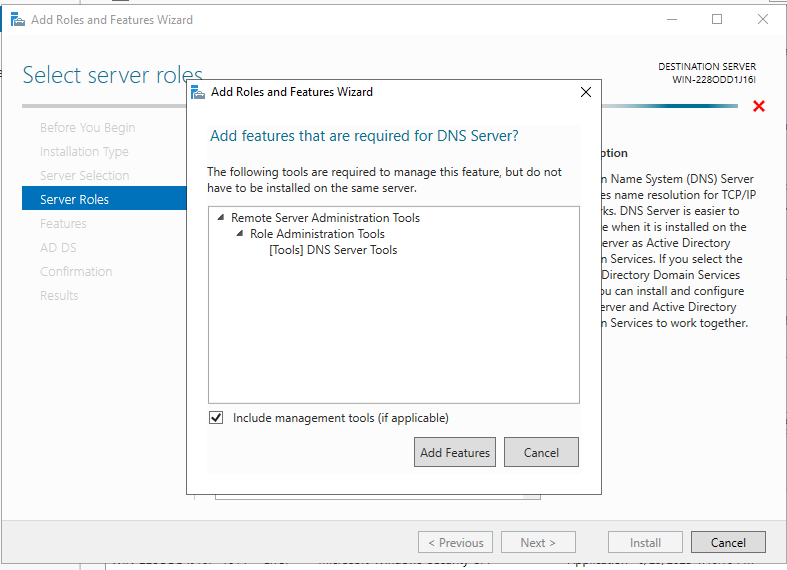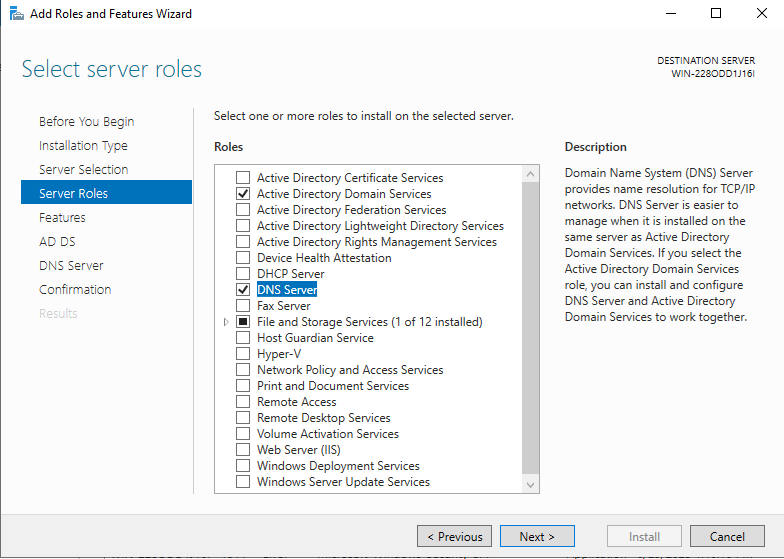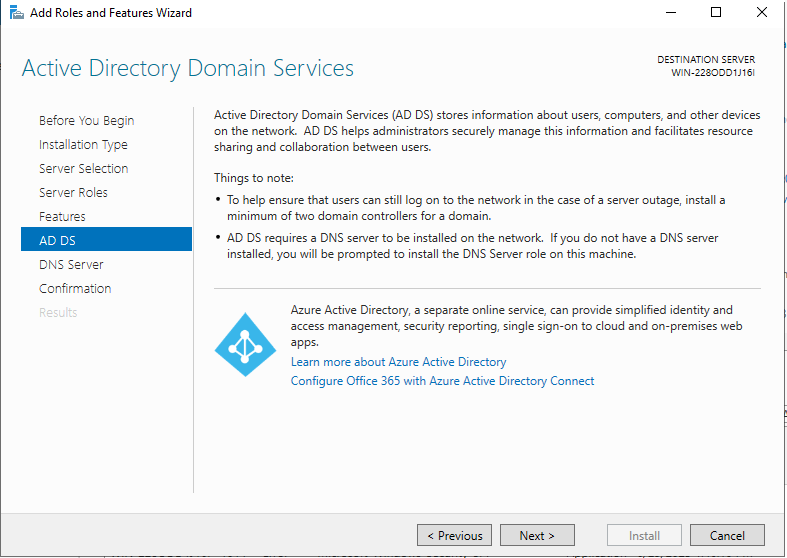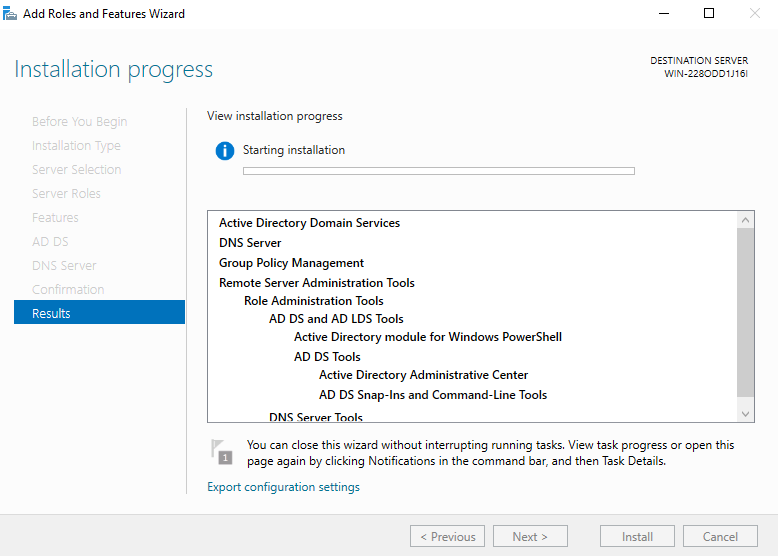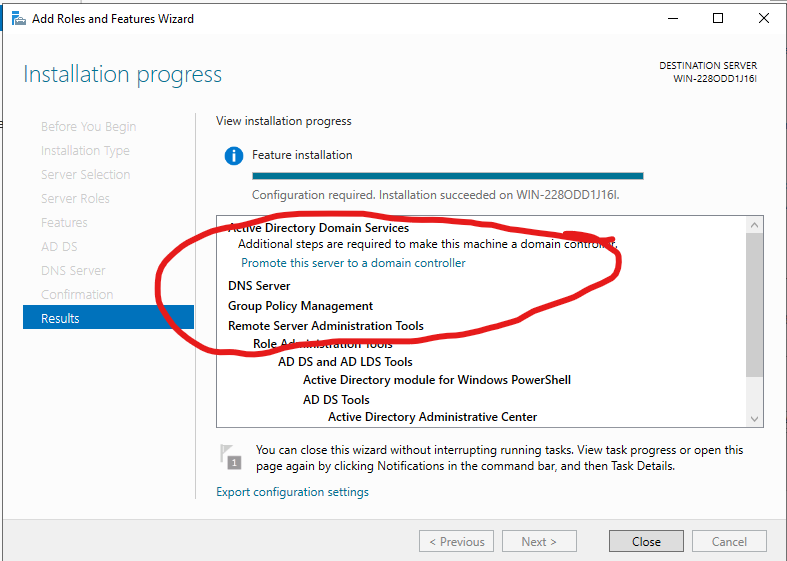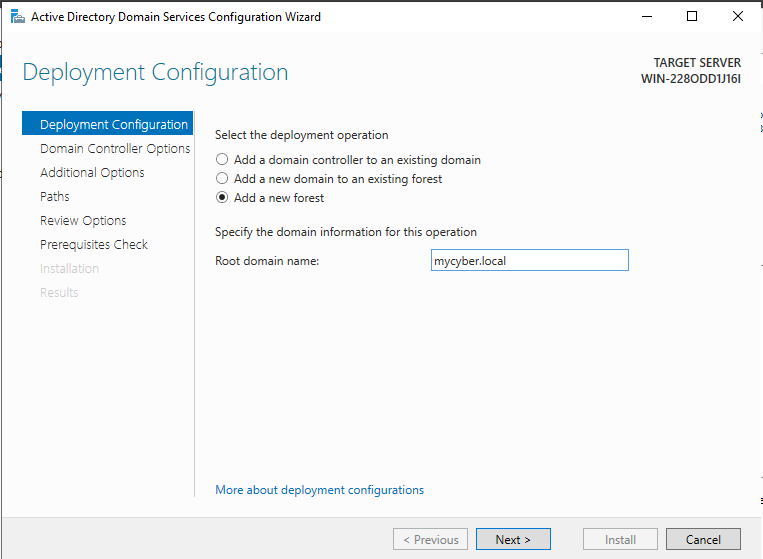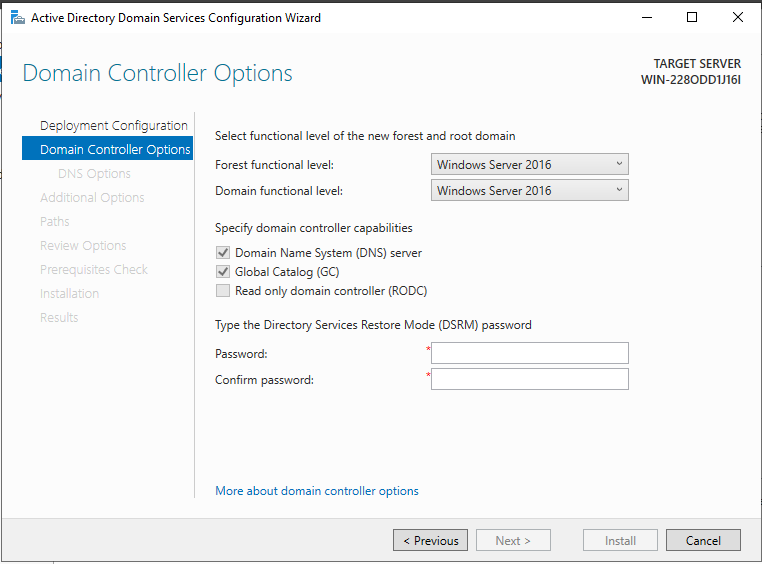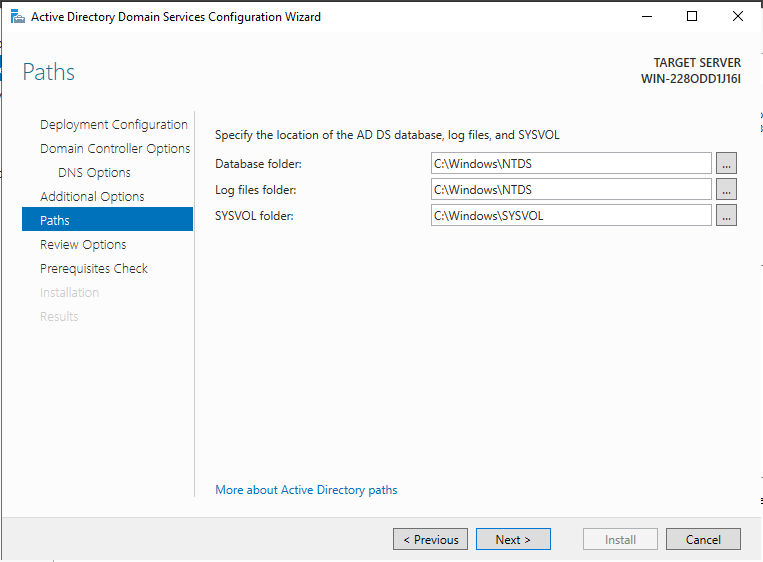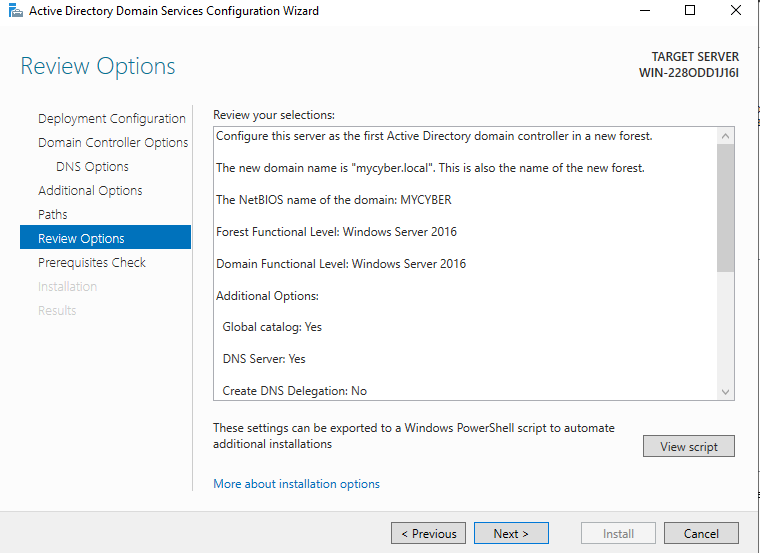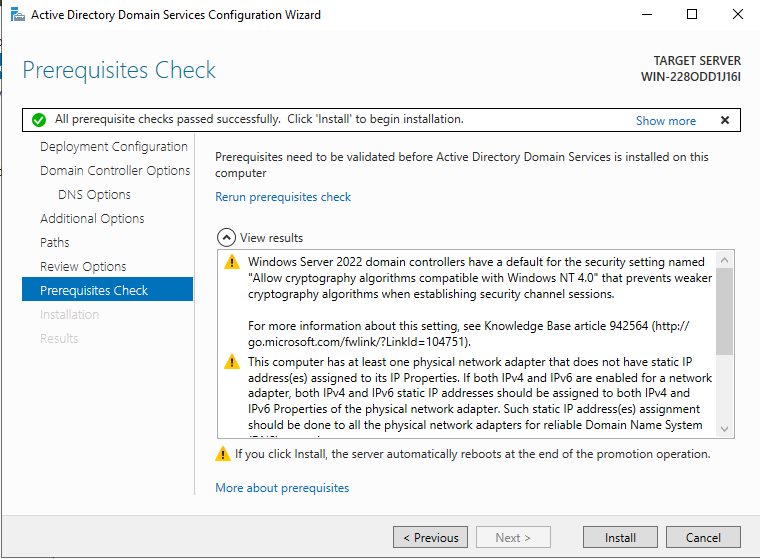8 Create a Windows Server
Mathew J. Heath Van Horn, PhD and Raechel Ferguson
Windows Server is a popular server that offers many functions for businesses to control their enterprise network. It is not a singular operating system, but rather a group of operating systems that can be used in a variety of ways. This lab’s focus is on installing Windows Server for the first time with the most common features.
Learning Objectives
- Using an image of Windows Server, install and configure Windows Server as a virtual machine in the GNS3 workspace
Prerequisites
Deliverables
- None – this is a preparatory lab that supports other labs in this book
Resources
- Most students at colleges and high schools can download Windows Server (with a license key) through Azure for Education. Ask your instructor for details or a copy of the Windows Server iso file.
- Some testers have used the Windows Server Evaluation copy available here. If you use an evaluation copy, ignore references to product keys.
- NOTE: Each source will referenced with its corresponding number in superscript (EX: 1 ) at the end of a step
- 1. MSFT WebCast. “How to Install Windows Server 2019 in VirtualBox (STEP by Step Guide).” YouTube, January 23, 2019. https://www.youtube.com/watch?v=ZjQSuyuN0nA&list=PLUZTRmXEpBy32NP6z_qvVBOTWUzdTZVHt.
- 2. MSFT WebCast. “Basic Configuration Tasks in Windows Server 2019.” YouTube, January 25, 2019. https://www.youtube.com/watch?v=1nxYJSV7-u8&list=PLUZTRmXEpBy32NP6z_qvVBOTWUzdTZVHt&index=3.
- 3. MSFT WebCast. “Setting up Active Directory in Windows Server 2019 (Step by Step Guide).” YouTube, January 28, 2019. https://www.youtube.com/watch?v=h3sxduUt5a8&list=PLUZTRmXEpBy32NP6z_qvVBOTWUzdTZVHt&index=5.
Contributors and testers
- Julian Romano, Student, ERAU Prescott
- Evan Paddock, Cybersecurity Student, ERAU-Prescott
- Dante Rocca, Cybersecurity Student, ERAU-Prescott
Phase I – Install Windows Server as a VM
Installing Windows Server on a VM has some nuances to be followed in VirtualBox. Please read the instructions carefully.
- Open Virtual Box Manager
- Select New from the top ribbon to open the “Create Virtual Machine” window (Figure 1) 1
- Name the VM “Windows Server” 1
- Use the ISO Image drop-down box to select the iso image for Windows Server that you have downloaded
- Click the box that states Skip Unattended Installation
- Press Next
- Use the default hardware settings (Figure 2)
- Press Next
- Use the default Virtual Hard disk settings (Figure 3)
- Press Next
- Review the Summary and press Finish (Figure 4)
- Start the Windows Server VM by pressing the big green arrow on VirtualBox Manager to start the setup process
- On the setup screen, use the defaults and press Next (Figure 5) 1
- Click Install now (Figure 6) 1
- Enter your product key (Figure 7) and press next
- Select the desktop experience (Figure 8) and press next
- Read and accept the license terms (Figure 9) and press next 1
- Click on Custom Install (Figure 10) 1
- Leave the defaults (Figure 11) and press Next
- Wait for the installation to finish (Figure 12) and restart
- At the Password Screen, set the password to “Security1” and press Finish (Figure 13) 1
- If your Host OS reacts to the pressing of Ctrl-Alt-Delete instead of the VM, press your Host Key (right ctrl by default) and delete simultaneously to get to the Windows Server login screen on your VM
- Log into the Windows Server using the administrator credentials (Figure 14)
- At the first start-up, you will get two popups (Figure 15)
- Server Manager – Click on Don’t show this message again
- Networks – Click Yes
- This brings you to the Server Manager Dashboard (Figure 16)
Phase II – Install Active Directory
Active Directory (AD) is a collection of processes and services. It is commonly used to assign and enforce security policies for all computers on the network via a Windows Server running Domain Services. The Windows Server with Domain Services running is called a Domain Controller. Most Windows Server services rely on the Domain Controller to function properly.
- The Server Management Dashboard should open automatically on Windows Server startup (Figure 16)
- On the left side of the dashboard, click on Local Server (Figure 17) and give it a couple of seconds to populate the information 3
- Click on Manage in the top right-hand corner of the screen. Once the drop-down appears click on the Add Roles and Features option shown (Figure 18) 3
- An “Add Roles and Features Wizard” box will open
- Before you begin – Click next (Figure 19) 3
- Installation Type – click the Role-Based option – click next (Figure 20) 3
- Server Selection – click on your local server (Should be the only option) – click next (Figure 21) 3
- Server Roles – select Active Directory Domain Services which will automatically open a pop-up window (Figure 22) where you will press the Add Features button 3
- Returns you back to the Select Server Roles (Figure 23) and you can see that the Active Directory Services option now has a checkmark next to it
- Select DNS Server from the list of options which will open a pop-up Window (Figure 24) where you will press the Add Features button 3
NOTE: You may get an alert. This is normal because we haven’t finished configuring everything. Just press “Continue”
- Returns you back to the Select Server Roles (Figure 25) and you can see that the DNS Server has a checkmark next to it – Click Next 3
- Features (Figure 26) – Click Next 3
- AD DS (Figure 27) – Click Next 3
- DNS Server (Figure 28) – Click Next 3
- Confirmation (Figure 29) – Click Install 3
- Wait for the installation to complete (Figure 30)
- Click on the blue text that states, Promote this server to a domain controller. (Figure 31) and you will get a popup 3
- Configure Active Directory Domain Services Wizard
- Deployment Configuration (Figure 32)
- Click on Add a new forest 3
- Root domain name: pick something you would like. For these examples “mycyber.local” was chosen 3
- Click Next
NOTE: Creating a new forest can take a minute or two.
- Domain Controller Options- select a password for the DSRM – we typically use “Security1” in this book (Figure 33) – Click Next 3
- DNS Options (Figure 34) – Ignore the alert if there is one and Click Next (Figure 34) 3
- Additional Options – It takes a moment to auto-populate with MYCYBER, but if it doesn’t type it in. Then Click Next (Figure 35)
- Paths – Click Next (Figure 36) 3
- Review Options – Click Next (Figure 37) 3
- Prerequisites Check – (this could take a minute for a green box to appear – Ignore the alerts) Click Install (Figure 38) 3
- The Server VM will automatically restart (Figure 39), just wait for it to finish
- Deployment Configuration (Figure 32)
Phase III – Add to GNS3
Add the newly created Windows Server VM to GNS3.
- Follow the procedures for adding a VM to GNS3
- You may want to make some changes to the default settings
-
- Change the image to look more like a server instead of a PC
- Change the network options to Allow GNS3 to use any configured VirtualBox adapter
End of Lab
List of Figures for Printed Version

